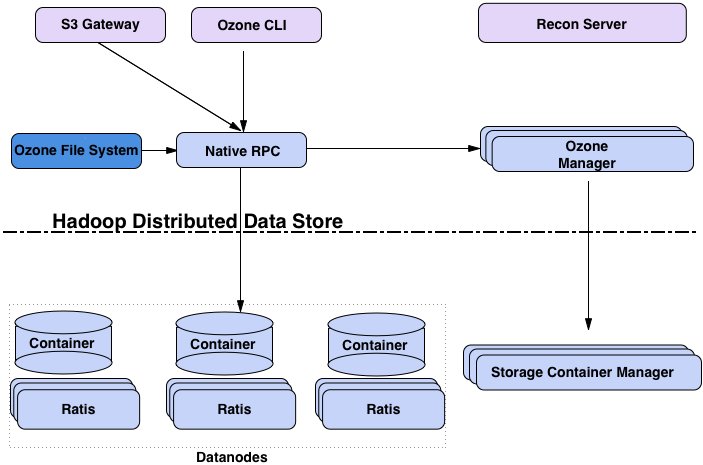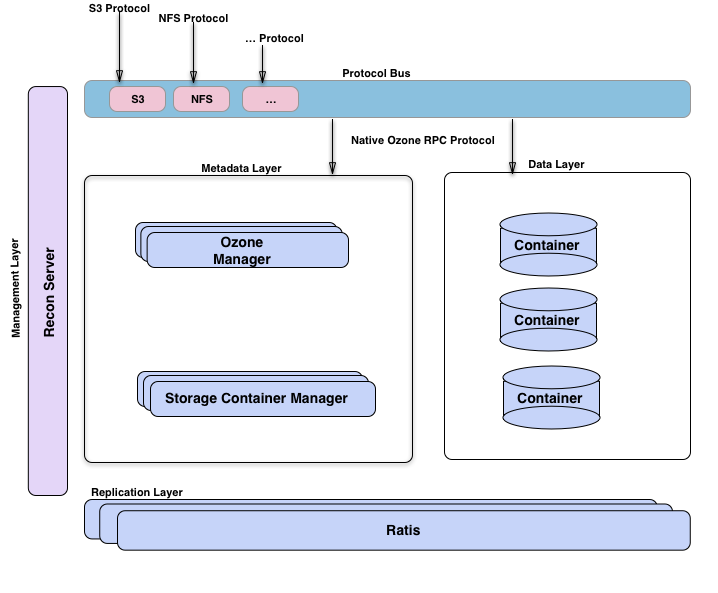Overview
Ozone is a redundant, distributed object store optimized for Big data workloads. The primary design point of ozone is scalability, and it aims to scale to billions of objects.
Ozone separates namespace management and block space management; this helps ozone to scale much better. The namespace is managed by a daemon called Ozone Manager (OM), and block space is managed by Storage Container Manager (SCM).
Ozone consists of volumes, buckets, and keys. A volume is similar to a home directory in the ozone world. Only an administrator can create it.
Volumes are used to store buckets. Once a volume is created users can create as many buckets as needed. Ozone stores data as keys which live inside these buckets.
Ozone namespace is composed of many storage volumes. Storage volumes are also used as the basis for storage accounting.
The block diagram shows the core components of Ozone.

The Ozone Manager is the name space manager, Storage Container Manager manages the physical and data layer and Recon is the management interface for Ozone.
Different Perspectives

Any distributed system can be viewed from different perspectives. One way to look at Ozone is to imagine it as Ozone Manager as a name space service built on top of HDDS, a distributed block store.
Another way to visualize Ozone is to look at the functional layers; we have a metadata data management layer, composed of Ozone Manager and Storage Container Manager.
We have a data storage layer, which is basically the data nodes and they are managed by SCM.
The replication layer, provided by Ratis is used to replicate metadata (OM and SCM) and also used for consistency when data is modified at the data nodes.
We have a management server called Recon, that talks to all other components of Ozone and provides a unified management API and UX for Ozone.
We have a protocol bus that allows Ozone to be extended via other protocols. We currently only have S3 protocol support built via Protocol bus. Protocol Bus provides a generic notion that you can implement new file system or object store protocols that call into O3 Native protocol.
Next >>